5 Business Ads That Worked: Inside the Genius Marketing Campaigns
Thousands upon thousands of ads are thrown our way every day. On your way to work, you see a billboard. Before the YouTuber you watch comes on, there’s a video ad. Everywhere we look, advertisements are in our faces! It’s impressive when one can break through all that noise and make us take notice.
This article will take you behind the scenes to see some of the most brilliant business ads and marketing campaigns ever created. We’ll show you what made them so effective and how their creative teams came up with ideas that would go on to impact pop culture.
So grab a drink (although I doubt it needs to be alcoholic for an article about ads) and get comfy. This is everything you’ve wanted to know about marketing wins that companies still chase today!
Table of Contents
Ad Greatness Defined
Before we get into some examples, let's talk about the critical aspects of an excellent business ad:
- Memorable — The best ads stick in your mind with their clever writing, killer visuals or infectious jingles.
- Emotionally engaging — Instead of just selling a product, think about telling a story that will make people laugh, cry or get inspired.
- Creative and original — You need groundbreaking ideas and innovative creativity to stand out from the daily hordes of commercials.
- Pop culturally relevant — Iconic ads become references in everyday conversation worldwide.
- Effective — At the end of the day, great creatives boost sales and get people talking.
The 5 Most Iconic Business Ads That Left a Lasting Legacy
1) Apple's “1984” Super Bowl Commercial
In an alternate universe, there’s a world where Apple’s iconic “1984” ad never aired. But we’re not in that world and thank god for it.
There isn’t much I can say about this one you don’t already know. The chilling dystopian nightmare of an opening scene showing a wave of zombie workers being brainwashed only to have their trance stricken by some athletic hammer-throwing chick immediately grabs your attention and refuses to let go.
The ad championed the young brand against a sea of stiff competition at the height of tech’s oppressive reign over consumerism. It set them up as a liberating force fighting for individuality and empowerment (hmm, sounds like another company we all know too well).
Despite its dark tone and avant-garde execution (which many people didn't understand), the cultural impact was undeniable. It made headlines all across America on Super Bowl Sunday with shock, confusion, praise and backlash — all signs that an ad is doing what it's supposed to do. It also set both Apple and Super Bowl ads as pillars of advertising relevance.
To make matters worse for other companies hoping to create something as memorable, this thing cost $1 million back in 84′! Good luck finding anyone willing to shell out even half that amount these days.
2) Old Spice's “The Man Your Man Could Smell Like”
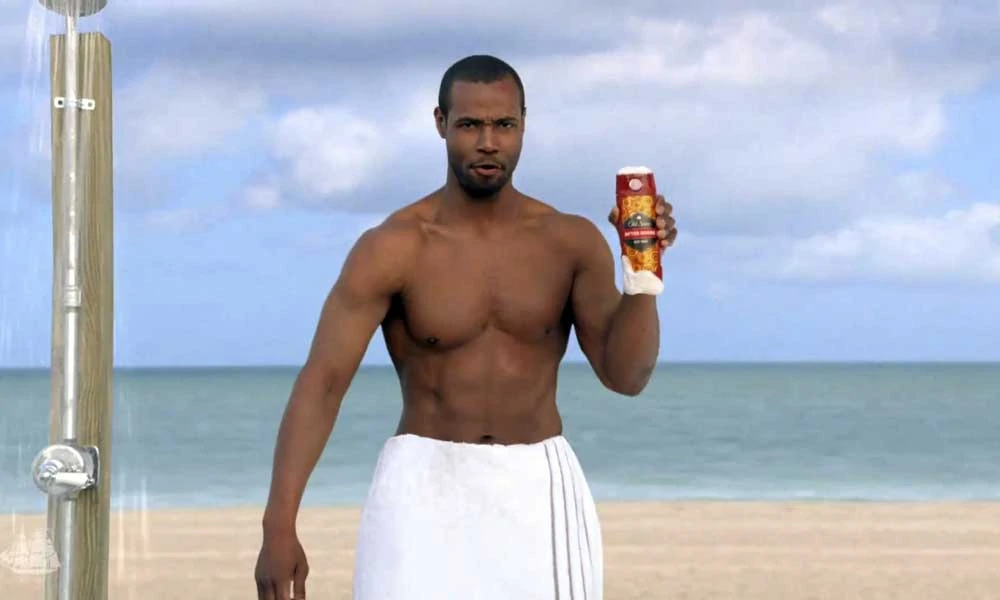
In a time when the brand had been wiped from everyone's memories, it shows that when creative juices are flowing at an agency, new ideas can have a considerable impact.
Old Spice was more like Grandpa’s deodorant before Wieden, and Kennedy thought of their hunk of a man. The agency worked with Isaiah Mustafa to create the manly man who would soon become known for saying… well, pretty much anything in his low voice. And to say their ads were bizarre would be an understatement. We all remember, “I'm on a horse!”
The rapid-fire delivery and ever-changing visuals combined with Mustafa's delivery made us laugh until we couldn't breathe while making Old Spice look good. They'd fly through crazy scenes with clever video editing tricks so fast it felt like you were watching a movie.
And then, just as you’d finally started breathing again after laughing at one of their ridiculous scenarios, the ad would take a turn and throw in something about how you aren't clean unless you're using Old Spice body wash impregnated with …smellsmellers?
W+K spoke our language by being self-aware and absurd, so they turned Old Spice into something young guys wanted to use. It wasn’t just this campaign that went viral; Mustafa as “the Old Spice guy” became known across all media.
3) Budweiser's “Whassup?”
How do you capture the spirit of the times? Budweiser found a way. This wildly popular early-2000s hit nailed down the essence of male bonding in its purest, most hilarious form: greeting your bros and asking, “Whassup?” in that trademark inflexion.
But it wasn’t just any kind of genius — it was simple. Buds on a couch watching sports and trading a hand signal is straightforward but infinitely relatable. It’s hard to picture men rolling on the floor from laughter at something so mundane. But Budweiser’s take on this everyday activity was comedy gold.
The iconic line became pop culture after it aired and stuck around for a while afterwards. Sitcom characters, athletes, and even (former) President Bush all had their best nasal “WHASSUP?” ready to go. Not bad for an ad about beer!
Besides being catchy and relatable, “Whassup?” also created a fun, unpretentious vibe around Bud with its spot-on male camaraderie and banter. No flashy production or outlandish humour is required — just friends enjoying beers together. A marketing home run that showed how powerful genuine social insights can be.
4) Taco Bell's Chihuahua
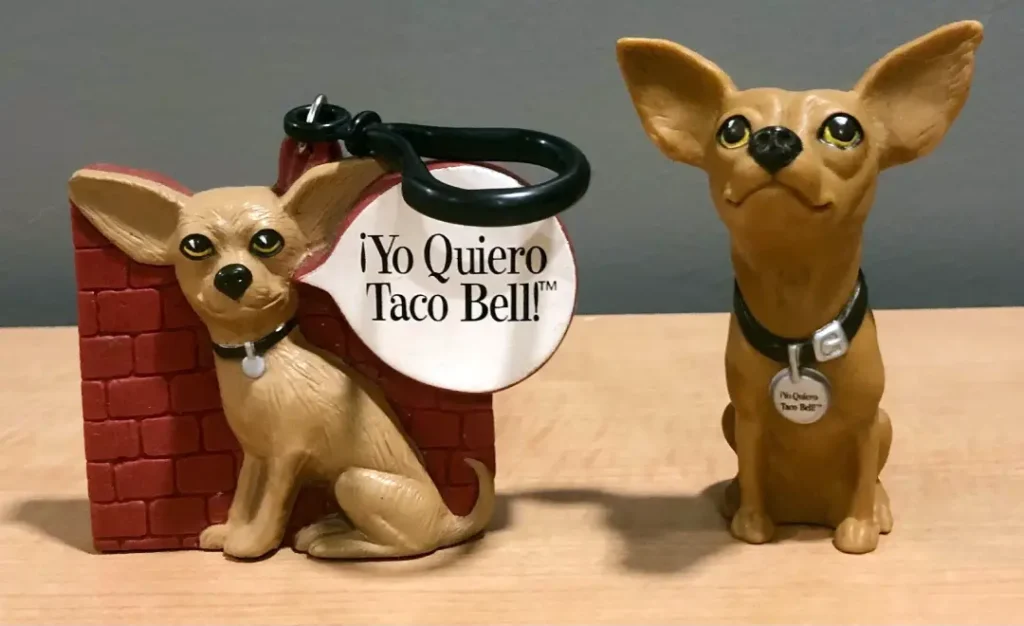
This took the selling of food to a whole new level. Who would’ve thought they’d be able to make a Chihuahua say “yo quiero Taco Bell” and have it catch on? Everything works for a reason, and this worked like magic.
It seemed so simple on the outside: just take a cute thing and make it sell your product. But there’s more to this than meets the eye. A lot of personality and charisma had to be injected into this Chihuahua so we would not get tired of hearing about his cravings.
Carlos Alazraqui did a fantastic job voicing our short hero with his growls, barks, yelps, or whatever noises you want to call them. He brought the character we all loved watching come alive.
Made famous for its grumpy bravado, The Taco Bell Chihuahua is as lovable as insolent. This pooch made us all root for him despite his rude attitude towards other animals. His lashing out at poodles or getting sent to the pound made everyone love our little bad boy even more.
The balance between being annoying and charming made him famous among mainstream Americans. And who could blame them? It’s not every day you see something like this!
5) Wendy's “Where's the Beef?”
“Where’s the Beef?” holds a spot on the Mount Rushmore of taglines, having captivated an entire nation with its imagination and attention. This Wendy's campaign took what could have been interpreted as a raunchy euphemism and turned it into a request for larger, better hamburgers.
Their award-winning commercial featuring those sassy ladies at the burger joint was simple yet effective. The exaggerated dissatisfaction over those puny “baby” burgers and their squinting eyes at the lack of meat tapped into everyone’s consumer disappointment in skimpy portions from prominent food chains. When that cranky old lady questioned, “Where’s the Beef?” – we all wondered too.
Within weeks, “Where's the beef?” became firmly rooted in our culture, much like how people used it in politics and journalism to demand results instead of promises. What started as a funny prank to expose laughably small burger patties became a song about believing in promises and upholding expectations.
Wendy has done well to understand its target market. The way they demonstrated their thick juice patties versus their competition's sad ones explained their unwavering commitment to quality taste through just one phrase. These self-assured campaigns immediately attract brand trust and loyalty in the long term. Who wouldn't be cheering for the brand, giving you all that juicy goodness anyway?
Advertising Pioneers Who Broke the Mold
Some of history's most influential and culture-defining ads were not just the product of some random marketing effort. These ads were the brainchild of visionary agency creatives who had forever changed the advertising world with their ideas. Here are a few of those founding fathers of modern advertising:
Bill Bernbach and the Creative Revolution
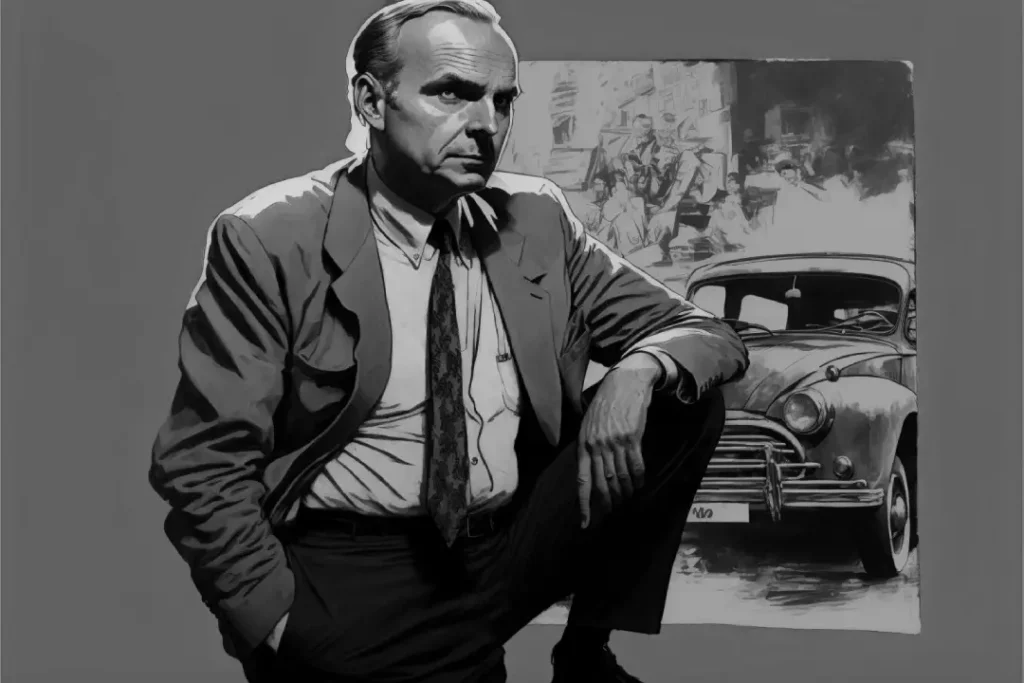
If there’s one guy you must know in 20th-century advertising, it’s Bill Bernbach. A copywriter turned agency founder, he is widely regarded as the original “Mad Man” who would transform his industry from being an artless way to sell things to a source of persuasive creativity. He led Madison Avenue to its now-influential “Creative Revolution”, which emphasised emotional resonance, entertainment value, and big conceptual thinking above trivial product facts and aggressive sell tactics.
Before Bernbach started making waves in advertising, most product campaigns were formulaic and idea-less; they focused on listing features mechanically rather than capturing hearts cleverly. But then came along Bernbach with his concise, conversational ads full of wit and surprises for clients like Volkswagen, Avis and Polaroid. His “Think Small” campaign made fun of how small the VW Beetle was, for example, or his “We Try Harder” slogan for Avis’ non-leading car rental service. These ads showed that with some imagination, you could make something out-of-the-box enough that it’s unforgettable.
With his magic ad mantra “Make the product the hero”, Bernbach’s work inspired a whole new class of creatives who strived to bring human truth, humour and beauty into their campaigns. His minimalist use of words paired with evocative visual storytelling set up ground rules for advertisers to follow well into this day and age.
George Lois and the Art of Outrageous Ads
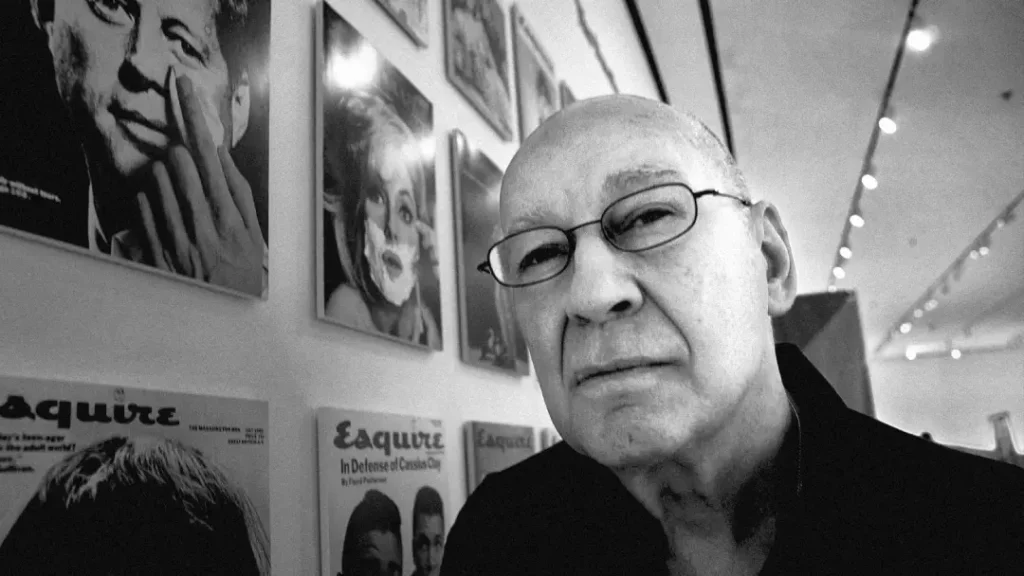
As in many other industries, rule breakers often create what lasts long in advertising. And there wasn’t a single adman who touched the legacy of George Lois when it came to annihilating norms and shaking things up. So much so that he described his objective as something along the lines of “mass communication with a Volkswagen Beetle caressing a luscious blonde model in the nude.” No boring, buttoned-up Don Drapers under his watch!
Lois fired out campaigns left and right in his “original Mad Man” career at agencies like Doyle Dane Bernbach and his eponymous firm. His magazine spreads were eye-popping, such as this Lemon one, where a VW bug was drenched in lemons to boast about the car’s sturdiness. And let’s not forget those Esquire covers like Andy Warhol dribbling a paint-filled Boxer while standing on its hind legs.
Tapping into pop art and satire — two unstoppable creative forces — Lois loved seeing people getting triggered by his visually provocative ads that challenged taboos and poked fun at societal norms. Just look at how quickly Tommie Copper’s life-sized infant bundle ads got banned after they hit the shelves; at least Maypo had its image stamped as an unpredictable brand with those “I Want My Maypo” ads.
As rebellious as he was ambitious, Lois’ work frequently went beyond mere advertisements to become iconic milestones in American pop culture. For instance, his role in crafting MTV’s “I Want My MTV” launch campaign or the political ads for Robert Kennedy and Sonny Liston helped these men rise above their contemporaries.
Jeff Goodby and the Power of Branding Against the Ordinary
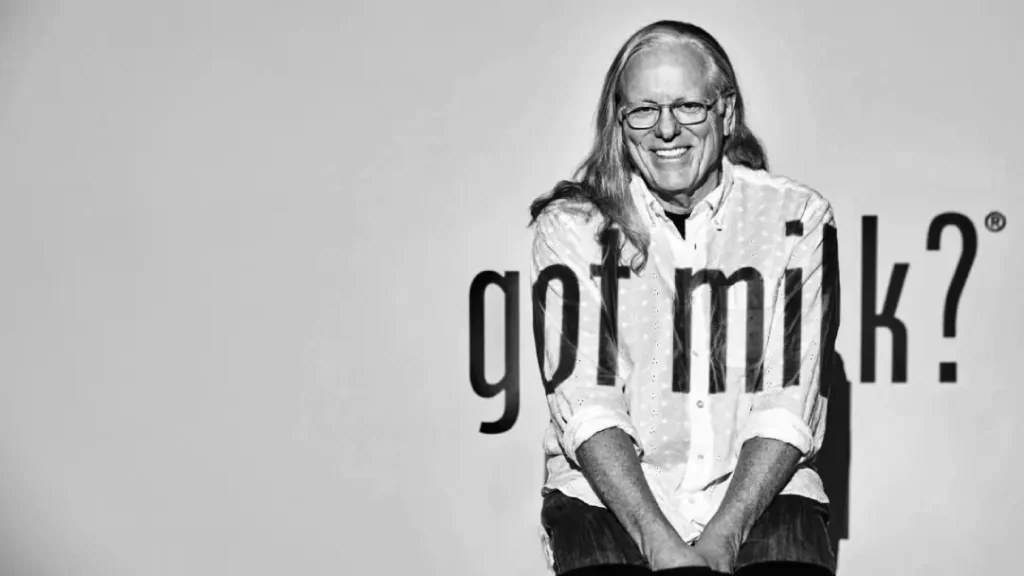
Fast forward to today, and you’ll find one name at the top of the creative food chain: Jeff Goodby. He’s the co-founder of ad agency Goodby Silverstein & Partners, and his team has been behind so many ads that struck a nerve in recent decades—from the Budweiser lizards and Cheetos’ Chester Cheetah to Sears’ “Delivery Boxer.”
Goodby’s speciality is making massive brand personalities out of nothing. His ads aren’t advertisements; they’re cultural properties with characters that audiences can latch onto. Take “Got Milk?” for example—those surreal, funny commercials created an unforgettable brand identity that stuck with people for years.
But even if some suits disagree with Goodby’s big comedic ideas or taste for memorable outrageousness, he doesn’t care. The best part about a goodbye ad is its refusal to be expected. When everyone zig, he zags—and his unconventional approach has netted him huge wins. He cast a nearly nude man as Pamplemousse soda walking through a garden and made John Leguizamo sing praises about natural beef snacks while dressed head-to-toe in flashy clothing.
By continuously bringing us fresh branding visions that no other ads could think up, Jeff Goodby and his team proved how invaluable genuine creativity is when paired with a fearless attitude towards advertising drabness. At a time when all we want are more unforgettable campaigns, Goodby sets the gold standard for entertainment without apologies.
Modern Ad Geniuses to Watch
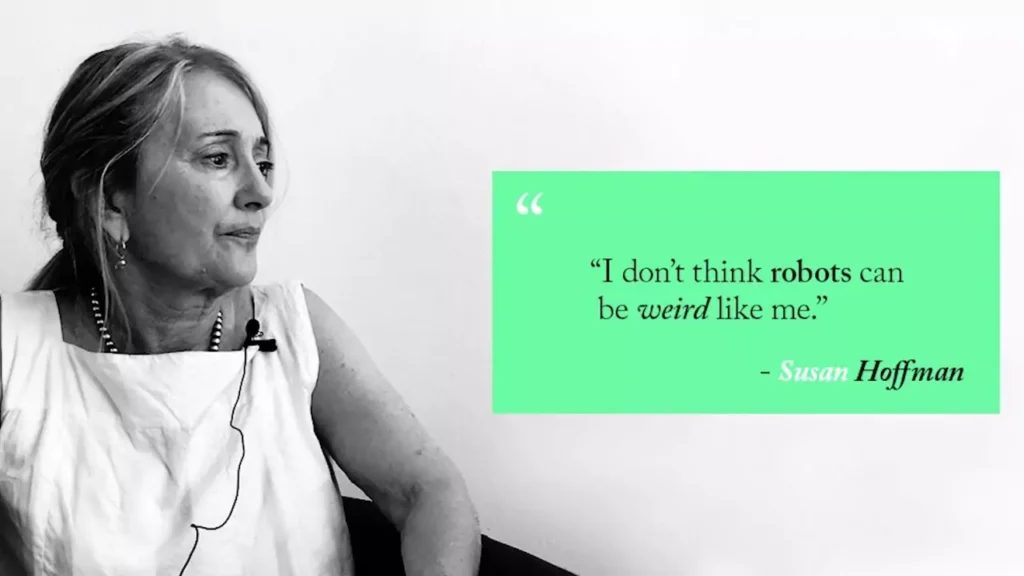
While legends like Steve Jobs blazed a trail that made this industry what it is today, another class of creative geniuses keeps the fire lit with bold new ideas. Here are some of the brightest minds in advertising continuing to push the boundaries and churn out campaigns that will go down in history:
Susan Hoffman, Chief Creative Officer at Wieden+Kennedy
If you're a fan of entertaining ads that capture the cultural moment, then you can thank Susan Hoffman and her team at Wieden+Kennedy. The woman who brought you Nike’s “Dream Crazy” with Colin Kaepernick, Old Spice’s “The Man Your Man Could Smell Like,” and Bud Light’s hilarious “Dilly Dilly” medieval jesters has been a populist force of creative brilliance.
Hoffman’s ads lack artifice; they just feel natural. They tap into universal truths and create rich characters to which we can relate instead of feeling like generic mouthpieces. Under her leadership, W+K has produced surprise-filled storytelling, brave risk-taking, and reverence for memes and internet vernacular, turning them into pop culture phenomenons.
Most importantly, though, Hoffman is a champion of creativity itself. She fights for work that excites people rather than blending into the background. She builds campaigns to spark conversation and stick in your mind.
David Kolbusz, Chief Creative Officer at Droga5
Want to see a modern-day genius hitting his stride? Look no further than David Kolbusz of Droga5. This guy is responsible for some of the most culturally significant branded work in recent years.
From Snap-streaked AIMÉ LEON DORE Queens fashion line’s universally adored Pony campaign to Alexa's avant-garde “Strange Is Beautiful” to CHARTS' arrestingly surreal Grubhub visuals — Kolbusz injects an irresistible amount of artistry into advertising. His PlayStation 4 story “Risks Worth Taking,” inspired by Macbeth, is a masterclass in transporting an audience into a fantastical world.
An unparalleled commitment to ambition and sophistication is at the heart of Kolbusz's game-changing work. He doesn’t do basic sales jobs. Instead, he pushes his teams to create fully realised cinematic experiences, each with its own rules. There's always a captivating story, a lush sensory aesthetic being cultivated, and humour and metaphor being deployed in wickedly clever ways.
It is even more impressive how seamlessly Kolbusz jumps from one visual and tonal direction to another for each new client. One day, he delivers a delightfully madcap quirk for Grubhub; the next, he gives you a pristine display of Dior's atelier for Paris Fashion Week. The world-building creative auteur knows that advertising can transport people just as much as great films or music when it leans fully into the imagination.
Sam Hirbodi, Executive Creative Director at Wieden+Kennedy
This next-gen creative firebrand at Wieden+Kennedy is your favourite player’s favourite player — essentially Steph Curry from the logo. As the director behind Nike shorts “First Steps,” art installation “LeBron 18 Uptempo”, and digital experience “The Pursuit,” Hirbodi has not only produced incredible work alongside some of the sports world’s most iconic athletes but has also found new ways to celebrate their passion.
Imagine Hirbodi as a slam poet prodigy from the streets with an unmatched talent for crafting catchy word combos and dramatic rhythms. That would only be one side of it, though – he has an eye for beautiful motion and jaw-dropping visuals. The result? A string of lush films and activations that’ll have your eyes glued to the screen.
Do you think you’ve seen experts in wordplay? Think again. This guy will make Kendrick blush. Do you like intricate symbols that hold secret stories only the most eagle-eyed can see? Look no further! Every project Hirbodi takes on is led by curiosity, respect, and love for culture.
In his immortal “Better” film homage, Kobe’s soulful perseverance is brought back to life through Hirbodi’s eyes, or picture Greek Freak’s rocketship dreams realised in “They Watched” – brimming with poetic slices of life and symbolic splendour. One revelation after another that all bear Hirdobi’s unmistakable stamp: unique multilayered style.
Lauren Ferrera, Executive Creative Director at Mother LA
Ferrera has been tirelessly reshaping ad boundaries since becoming a creative superstar. Her work for some of the biggest names on earth has always been defiant, surprising, optimistic and powerfully biting all at once.
Her portfolio doesn’t just zigzag through different projects – it rips right through them with explosiveness only Ferrera could deliver. Visceral punk rock feminism and sexual politics one day (Smirnoff's “Loud & Complicit)”… then irreverent psychedelic candy lands of colour the next (Skittles). You never know what you’ll get with Ferrera – anything from explosive femininity to shocking vibrancy.
No matter how wild or unexpected her work may seem, two things are consistent: a youthful satirical pop culture fluency and an insatiable drive for artistry that puts all other creators to shame. The result is work that’s so captivating it’ll have you watching it on repeat whether you’re a stuffy panellist or scrolling through TikTok.
Ferrera’s vision boils down to a desire to inspire and connect with audiences through any methods necessary. Whether it be with bright colours and pop culture references or dark undertones that only the most astute can pick up on… this woman will use any tool at her disposal to make an impact on every audience possible. She's a fearless animation anarchist brandishing eye-searing rainbows of colour.
The Secret Sauce: What Made These Ads Stand Out

As we take a look back at the most outstanding advertising campaigns, it’s clear that there are some common threads among the best of the best:
1) A Keen Eye for Culture and Consumers
Great ads don’t just tell us what companies want us to hear. Instead, they hold up a mirror to society, capturing undeniable truths about how we live, talk, and connect. They tap into consumers’ emotions and context: why we buy in and how.
Think about Old Spice going all in on ironic self-awareness and bro culture machismo. Taco Bell made their “yo quiero” meme come to life with an endearing gremlin personality for their craving-crazed pup. Wendy's used “Where’s the Beef?” to represent everyone’s demand for value.
What makes these campaigns unique isn’t the powerful human or cultural insight or even creative execution — though those things matter too. They hold up a kaleidoscope of our world before designing their work.
2) Legacy-Builders That Never Stop Building
Some of the most memorable advertising icons had staying power because brands kept finding new ways to delight audiences over time.
The Old Spice guy is one such icon. He became unmoored from reality but stuck with his preposterous persona as he found bizarre new scenarios to occupy, like unmanned bathrooms, muscle beaches, and deserts…in outer space?
Apple, Budweiser, and Wendy's — brands that already had the wind in their sails long before viral marketing was even possible — doubled down on what worked for them to create full-fledged cultural institutions that consumers still can't escape today.
There might not be a company better at building longevity than Nike has demonstrated through its collaborations with athletes and causes. The brand’s “Just Do It” campaign evolved beyond one powerful ad into something immortal.
3) The Courage to Be Different
Gutsy ads have always left an impact. We’re talking about the daring, disruptive, and just plain different, no matter the category or convention.
We’ve seen it repeatedly: Apple’s dystopian “1984” spot that had nothing in common with every other tech ad at the time. Taco Bell allowed its abrasive Chihuahua to mock its audience. Wendy's biting satire draws attention to tiny burgers.
George Lois and Jeff Goodby — two of advertising’s most infamous subversive minds — have built their careers on delivering what nobody else would ever dream of. Their work is avant-garde, high-concept, and always unexpected.
Notable campaigns like Goodby's Budweiser lizards, Old Spice's delirious maximalism, and Bernbach's timeless “Think Small” simplicity didn't just passively make ads people like. They were not expected. The stuff they did was the furthest thing from blending into the background of their eras. It was lightning bolts from the blue, jolting people out of their mundane bubble of awareness with unapologetically fresh creative expressing that captured imaginations precisely because it bucked every familiar trope and assumption.
Iconic advertising needs to be brave enough to be genuinely excellent. There’s no other way around it. You can’t just passively make ads people like and hope for success. You must spark conversations, court controversy by letting uncompromising visions run wild, and embrace your reckless originality. And you have to do it all in a way that makes the ad execs say yes, even though no sane person ever would’ve greenlit them.
In essence, Don’t play nice; play different.
Frequently Asked Questions
What makes ads memorable?
There are a few key things that can turn an ad campaign into something truly unforgettable:
Original, distinctive, creative execution
Writing or design that is clever and sticks in the mind
A solid connection to relatable human experiences or emotions
Characters, catchphrases or visual elements that survive beyond the ad itself
Bold moves that might have seemed controversial or risky at the time
How important is humour in advertising?
Humour is one of the most successful tools advertisers can use when it works. Amusing ads grab attention more quickly and become part of our shared culture far quicker than mundane ones. However, if a joke feels forced or doesn’t make sense with the brand’s message, then it will flop. The best comedic ads feel like the truth.
What makes a good advertising slogan or tagline?
Slogans and taglines must be short and memorable to stick with audiences. Using simple words to convey a focused brand truth is usually your best bet. It’s easy for taglines to fall flat using generic language that could apply to any company.
Are long-form ads more effective than short ads?
In this day and age, people’s attention span has never been shorter. That means you should keep your messages brief when presenting them on TV or any other platform where interruptions are expected. However, many of the most widely-watched “viral” ads have been longer pieces over three minutes long that captivated audiences enough for them to watch willingly – so there’s still hope for longer content.
How influential are celebrity endorsements & product placement?
Celebrities can be extremely useful in making an ad stand out, but only if it makes sense for their persona to align with your brand. On their own, celebrities aren’t much help and won’t have any effect on consumers without proper context. Similarly, product placement can be a great way to integrate marketing into content, but it must be done delicately.
